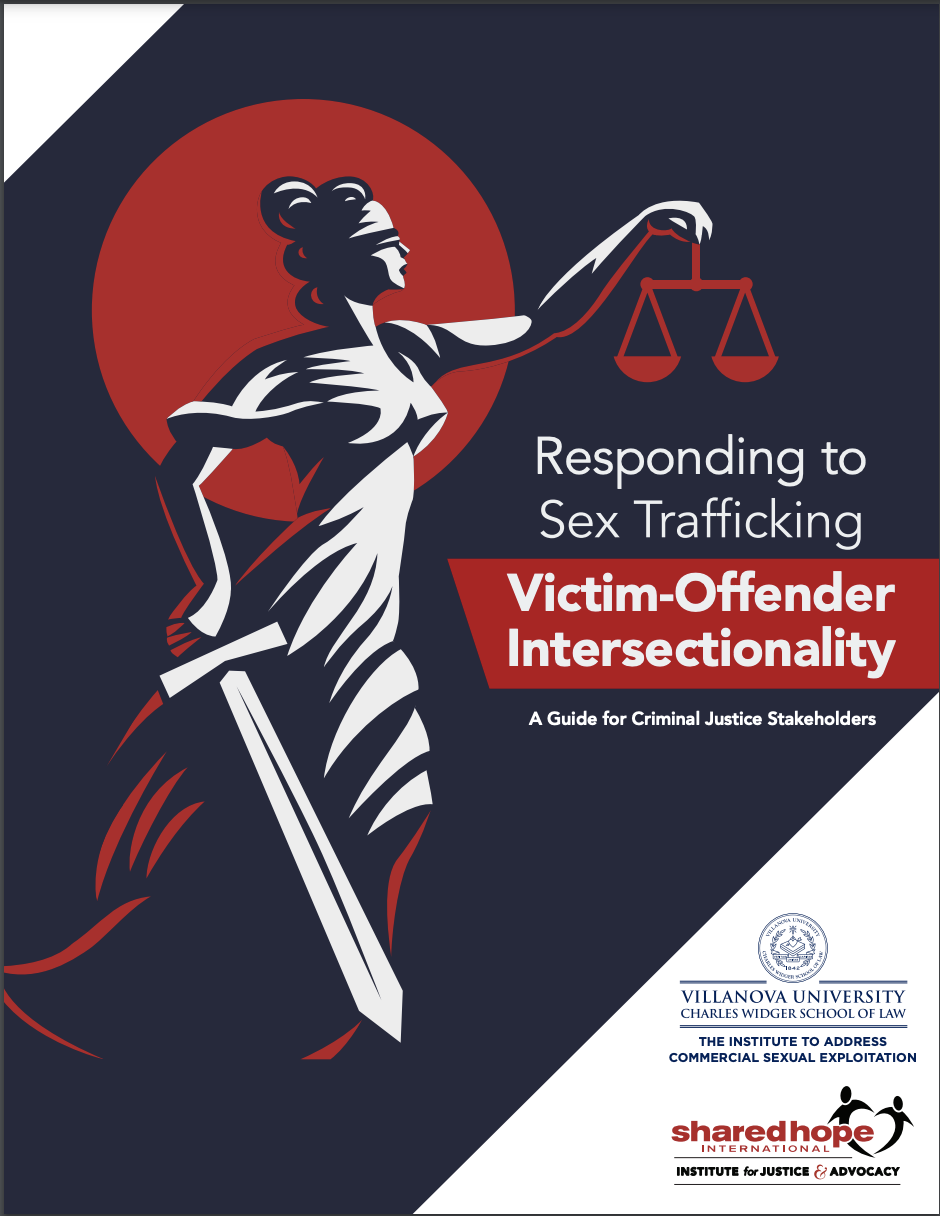
Responding to Sex Trafficking: Victim-Offender Intersectionality
INTRODUCTION
Lurking at the edges of almost two decades of progress in combatting sex trafficking in the United States is the problem of victim-offender intersectionality (ST-VOI). Indeed, the phenomenon of trafficking victims committing criminal acts is largely unavoidable in the sex trafficking victimization process. Consensus has grown within the antitrafficking movement that charging sex trafficking victims with prostitution can be harmful and retraumatizing, giving rise to specialized human trafficking courts, diversion programs, and “safe harbor”1 and vacatur laws that seek to mitigate the harm caused by criminalizing sex trafficking victims.
However, the field is increasingly seeing that the nature of sex trafficking victimization and the control and coercion exerted by those who profit from the exploitation of sex trafficking victims, means that prostitution is not the only crime that trafficking victims may be charged and prosecuted for in the course of their victimization. Increasingly, law enforcement, prosecutors, judges and victim advocates are being confronted with the complex question of whether a sex trafficking victim should be charged as an offender when that victim engages in conduct that violates the sex trafficking law. This question does not have clear or easy answers. As the circumstances vary widely from case to case, outcomes in these cases also vary widely, with the victim-offender’s trafficking victimization often being excluded from consideration as they proceed through the criminal justice system.
Over three years ago, the JuST Response Council began to discuss the issue of ST-VOI. Given the complexity of these cases, the Council recognized the injustice inherent in charging sex trafficking victims as offenders without consideration for their own victimization. Victimoffenders not only deserve, but require, a just, trauma-informed and victim-centered response. The Council also understood that when the intersection of victimization and trafficking conduct brings a victim-offender into the criminal justice system, a just response can be achieved if the relevant stakeholders in the process are informed about the phenomenon of ST-VOI and commit to both identifying victimization and responding holistically once it has been identified.
Acknowledging the need to improve awareness and response to STVOI, the Council developed this field guidance. This field guidance seeks to provide criminal justice stakeholders with resources and a guide to promoting more just and victim-centered approaches when they encounter the intersection of sex trafficking crimes that are alleged to have been committed by sex trafficking victims. The guide is designed to foster a case-by-case approach that considers the unique circumstances of the charged conduct alongside the circumstances of the offender’s trafficking victimization and how that victimization may have influenced the offending conduct.
GUIDING PRINCIPLES
The resources compiled in this field guidance are informed by three guiding principles identified by the JuST Response Council as broadly applicable to responding to ST-VOI:
- Proactive identification is key. Trafficking victimization is rarely easy to identify. As such, proactive steps should be taken throughout the criminal justice process to identify evidence that an individual suspected of or charged with trafficking has experienced, or is currently experiencing, trafficking victimization. Social factors that make an individual vulnerable to trafficking can also make them vulnerable to being coerced into committing trafficking offenses; however, despite similarity in underlying vulnerabilities, evidence that victim-offenders were subjected to trafficking victimization may not be as easy to identify as the victimization of individuals who are not also charged with offending conduct. Therefore, close assessment and quick identification of ST-VOI can help distinguish the role of a victim-offender from the role of a trafficker. Once ST-VOI is identified, it is imperative that stakeholders adopt a trauma-informed response.
- Trauma response to trafficking victimization is a critical factor at all stages of the criminal justice process. Either past or concurrent trafficking victimization can lead to a trauma response that influences a victim-offender’s alleged involvement in trafficking conduct. The impact of past and/or concurrent trafficking victimization on a victim-offender’s understanding of, and response to, their circumstances should be considered to determine the impact that the victimization had on the victim-offender’s ability (or perceived ability) to choose to act otherwise. The existence of trafficking victimization, concurrent or otherwise, is a crucial starting point for distinguishing intentional conduct from conduct that lacked choice. Since trauma response is not limited to immediate responses to trauma, the impact of trauma must be considered at all stages of the criminal justice process. For example, ST-VOI should be considered in decisions of whether to arrest and charge, whether to prosecute and on what charges, and whether to convict. If convicted, ST-VOI should be considered in determining what sentence is appropriate, including how the sentence could be mitigated to reflect the impact of sex trafficking victimization on the defendant’s conduct.
- Coercion of a sex trafficking victim may look different than coercion of other types of crime victims. Sex trafficking victimization and the resulting trauma response can uniquely impact a victim’s susceptibility to coercion, not only in the context of being coerced into commercial sex, but also in the context of being coerced to commit other crimes. Consistent with general principles of criminal law and justice, acts committed under coercion or duress are not as culpable as acts committed willingly or knowingly in the absence of coercion or duress. Understanding the nature and power of the coercion that traffickers exert over victims to cause them to engage in trafficking conduct is fundamentally important and must be considered at every stage of the criminal justice process.
Read more here.
